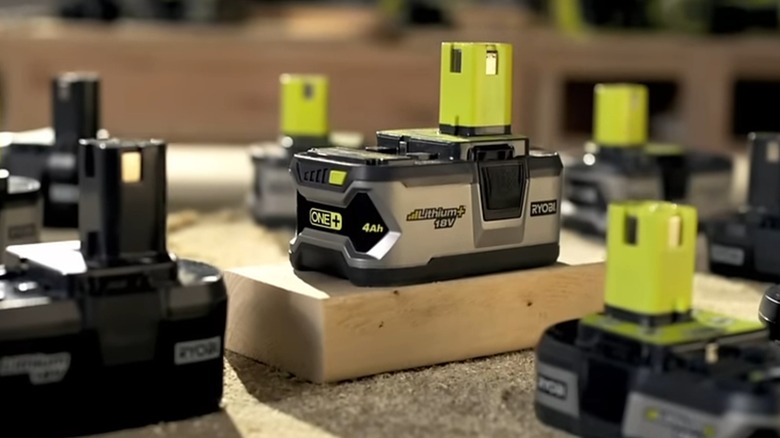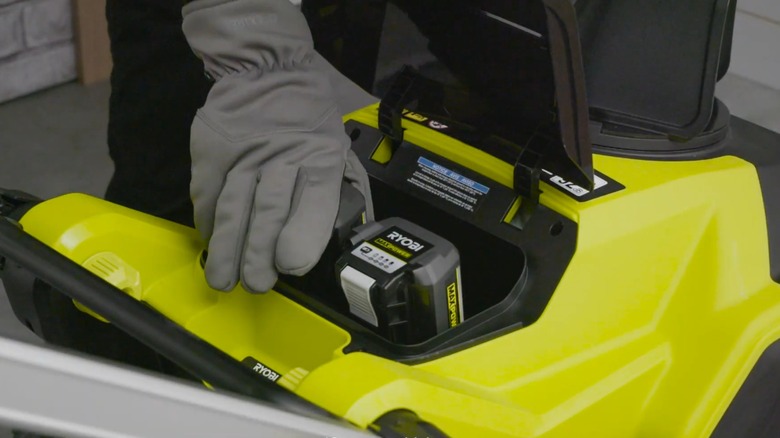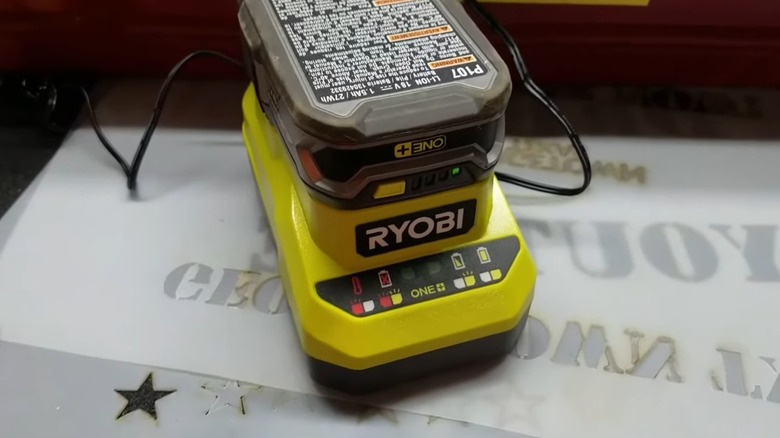Can Ryobi Batteries Freeze? Here's What You Need To Know
Ryobi has earned its place among the prominent tool brands on the market, and for good reason. It has very much stuck with industry trends, like offering a wide array of tools, pricing them competitively, and, of course, putting the bulk of its power tools on a cordless system. That means that once you find the right battery for your Ryobi tool, so long as it's charged and the tool itself is in usable shape, you can get all kinds of work done without cords in the way. However, the work doesn't stop once the job is done. Not only do you need to take care of your tools, but your batteries, too.
Despite their power and durability, Ryobi batteries need to be treated properly. First and foremost, one should be mindful of the temperatures they're used and stored in. For those concerned about batteries freezing if left in chilly temperatures, though, you don't have to worry. While there is liquid within a lithium-ion battery, specifically a liquid electrolyte such as LiPF6, LiBF4, or LiClO4, this liquid isn't prone to freezing in even the most frigid winter temperatures. With that said, just because Ryobi lithium-ion batteries can't freeze doesn't mean the cold won't impact their performance.
The last thing you want to do is leave a Ryobi battery to fend for itself in the cold. Ultimately, low temperatures will affect it over time in more ways than one.
How the cold impacts lithium-ion batteries
For the most part, lithium-ion batteries from Ryobi, or other tool brands for that matter, can function in the cold. They're durable enough to get the job done in the winter, and endure all the season has to offer. At the same time, for them to work at their best and last as long as possible, you should be mindful of the conditions they're in. Ryobi advises against exposure to temperatures below 0 degrees Fahrenheit. When a lithium-ion battery is left in the cold, its internal resistance increases, which means it can't use as much energy as usual nor retain a charge as long as it would otherwise. As a consequence, you'll get less use time out of your battery, and will have to charge it more often.
Speaking of charging, there are some specifics to lithium-ion battery charging in the cold to know. Typically you don't want to charge this type of battery at any temperature below 32 degrees Fahrenheit. Going beyond that and you're likely to deal with a decreased energy production and storage in the battery. It can cause a process called lithium plating, which sees lithium ions turn to metallic lithium on the battery's anodes. This leads to the creation of dendrites that can disrupt the battery's function and potentially cause it to short circuit. You can leave your Ryobi lithium-ion battery on the charger, but, evidently, doing so in the bitter cold is a bad idea.
Helping Ryobi batteries fight the cold
Now you know how not to use and charge a Ryobi battery in the cold, but if you have to use a battery in the cold, you should find a way to let your battery warm up before getting to work. Some Ryobi battery manuals recommend attaching it to a tool and using it lightly, therefore giving it a chance to warm up without pushing it too much. Once it reaches a comfortable room temperature or slightly warmer, it'll be good to go. As far as charging, so long as it's done in an environment at 32 degrees or above, as mentioned, you'll be in good shape.
Moving on to proper battery storage, this is pretty straightforward. Ryobi batteries should be stored in indoor areas free of humidity, away from rain and snow, in neither a hot or cold temperature extreme. Ideally, they should be left somewhere within the temperature range of 50 to 77 degrees Fahrenheit, to prevent premature loss of power and struggles to charge. These are some of the main reasons why your Ryobi battery doesn't last long enough.


